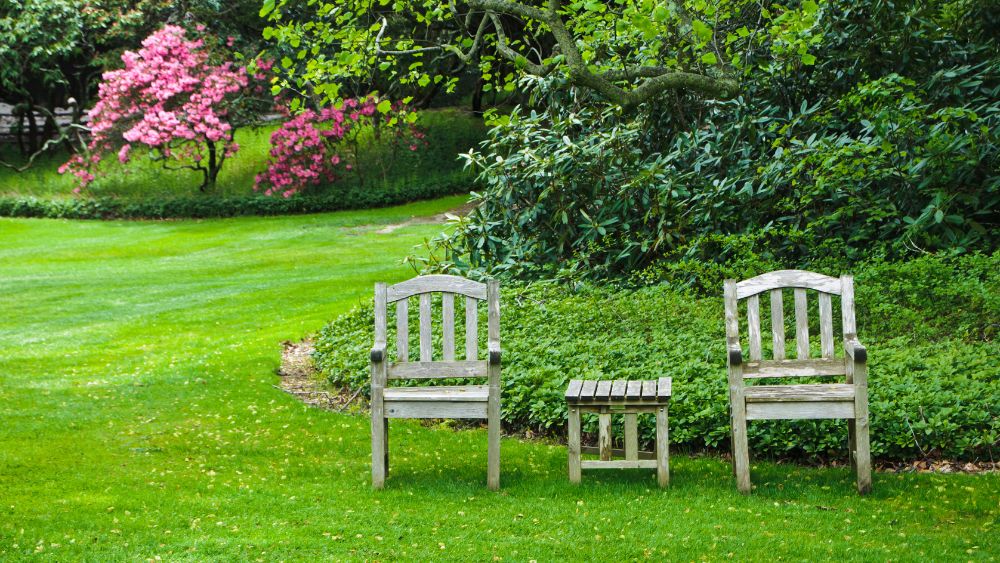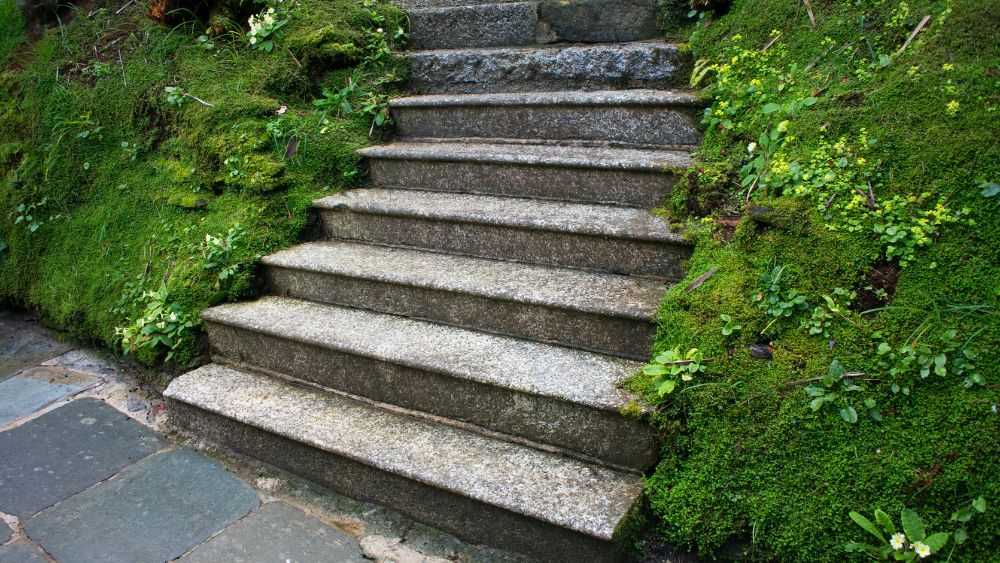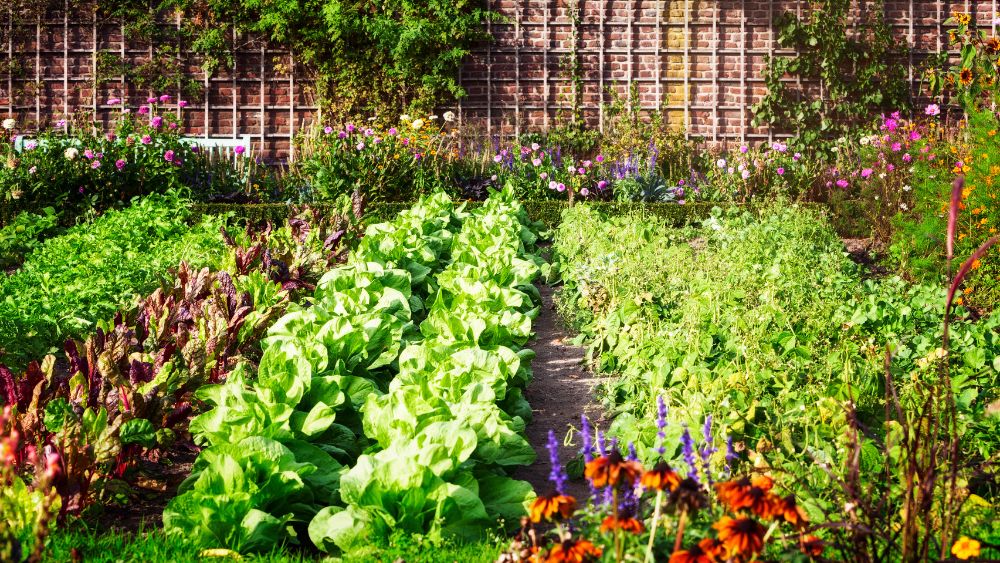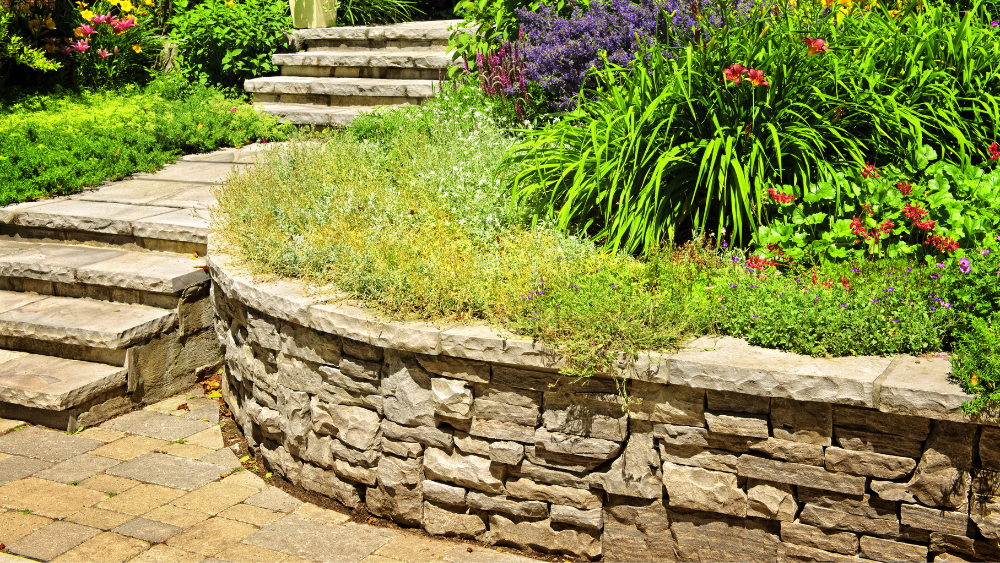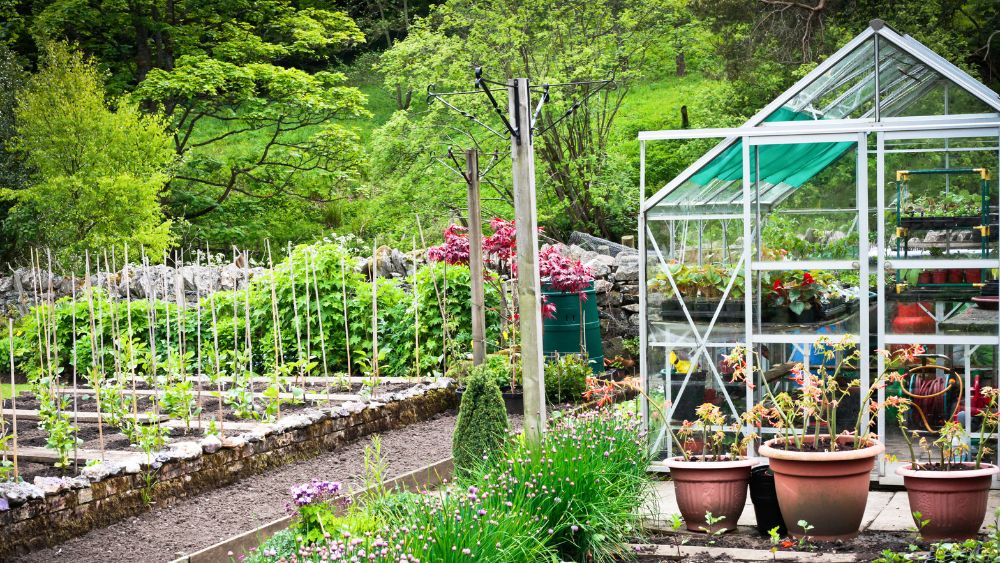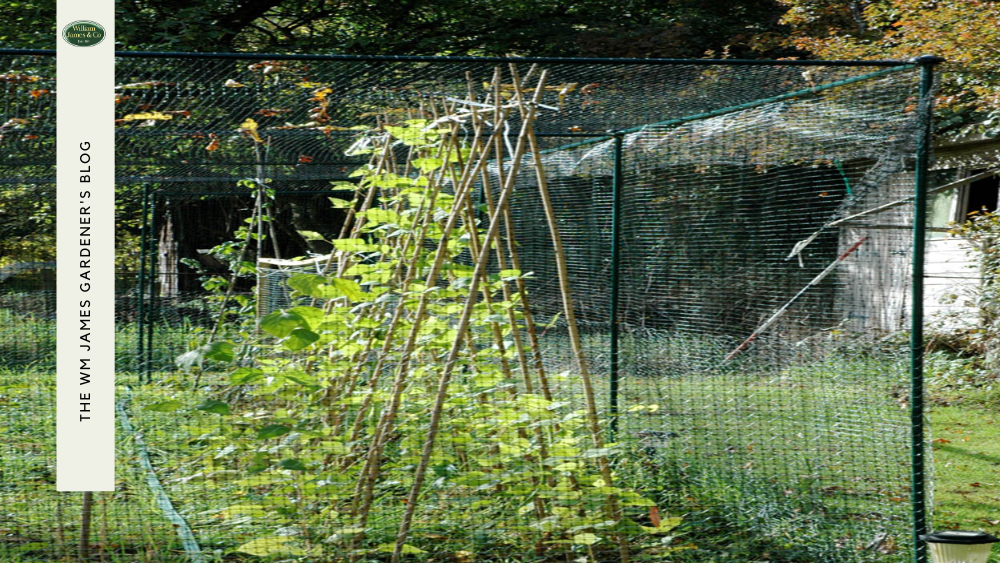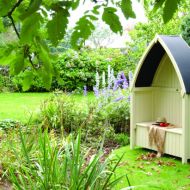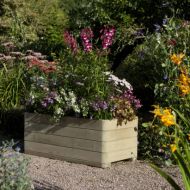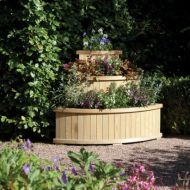We use cookies to make your experience better. To comply with the new e-Privacy directive, we need to ask for your consent to set the cookies. Learn more.
5 Incredible 2-Tiered Garden Ideas to Transform Your Outdoor Space
- Admin
- WM James Gardening Blog
- 31 Jan 2023
-
143views
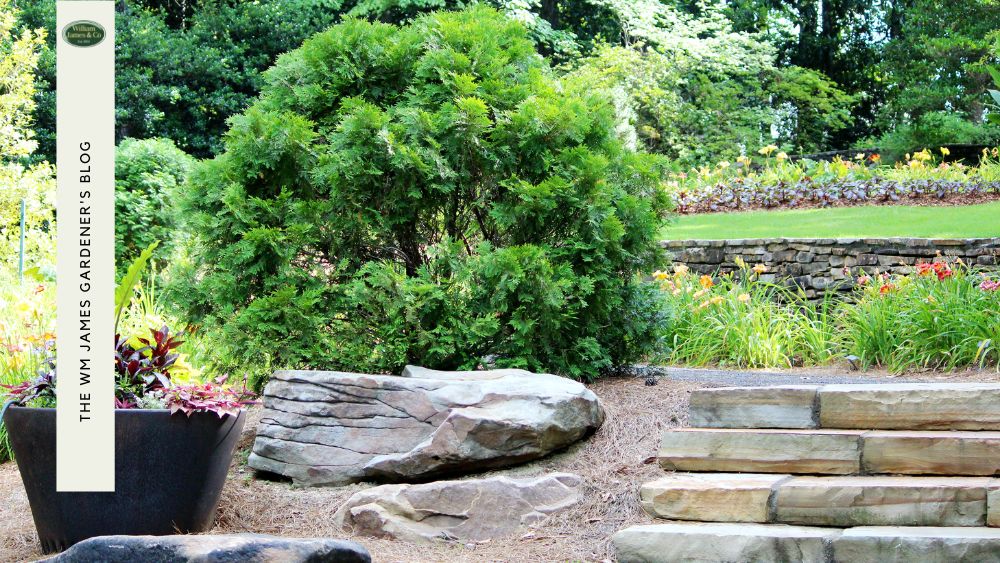
Discover 2-tiered garden ideas to make your outdoor space aesthetically pleasing. Transform your tricky garden into a retreat with WM James & Co.
Many people think that a tiered or sloping garden is a lost cause. But what we see is an opportunity! And we’ve rounded up some great 2-tier garden ideas so you can turn your garden into something special.
Rather than working against the natural slope of your garden, embrace it and create a multi-level space that is both functional and beautiful.
With the right planning and design, you can transform your tricky garden into a stunning outdoor retreat.
From creating a flower bed oasis to a cascading wall of herbs and veggies, you'll be able to make the most of your space while adding visual interest.
Unlock the potential of your outdoor area and get started with these projects today!
Our Top 5 2-Tiered Garden Ideas
You can easily transform your garden into a beautiful outdoor space with visually interesting terraces, seating areas, and well-placed planters.
The amount of effort you put in is entirely up to you! Whether you want to create something stunning with minimal work or invest more time for a magnificent result, it’s your choice.
To help you get started, we've compiled a list of five simple yet effective sloped and 2-tier garden ideas that you can enjoy and take pride in.
1. Create Seating Areas
A seating area is a simple way to make use of a sloping or tiered garden. Placing a designated seating area, like the stylish Winchester Arbour, at the top of the slope allows you to enjoy the views of your garden and appreciate its beauty.
Alternatively, you can place your seating area at the lower point of the slope so you can look up and take in your garden.
You don't need a large setup with a sofa or bench; just a few chairs and some cushions can create a cosy spot to relax and enjoy your garden. Choose outdoor furniture that matches your garden's style.
Rattan furniture offers a relaxed, natural vibe, while metal furniture provides a chic, modern look.
We tend to sway towards wooden garden furniture, though, as this creates a more traditional and timeless feel. It also blends in well with the natural elements of your garden.
Browse Our Wooden Garden Structures
A table is also a nice addition for resting drinks or food, and it can be perfect for outdoor dining. If your budget allows, consider using patio tiles to define the area for a tidier appearance.
If you're planning on an outdoor dining space, adding a small barbecue can create a centralised outdoor kitchen, ideal for gatherings with family and friends.
2. Carefully Position Terraced Planters
Planters are a great way to use the different levels in your garden and display all your favourite plants.
Placing terraced planters along the sloping edges of your garden and filling each with a different type or colour of plant will create a visually interesting look and give you plenty of planting space to work with.
Our favourite planter for this is the Marberry Corner Cascade Planter from Rowlinsons. This lovely wooden planter is designed to fit perfectly into a corner, making it perfect for creating a multi-level effect.
If you opt for wood furniture in your garden, this planter will also blend in really nicely, adding to the overall aesthetic of your outdoor space.
Depending on the area you are creating, you can use a combination of perennials and annuals for your planters. If this is an outdoor seating area, perennial plants may be better as they can come back year after year.
When planting your flowers and plants, consider the required level of light. You don't want to plant something that requires full sun in a shady area at the bottom of the tiers.
3. Install Garden Steps
If your garden has a steep slope or tier, installing some garden steps could be a good idea. They not only look nice and stylish but also offer a safe way to move around the garden.
Depending on the style of your garden and your budget, you can use materials such as timber or stone.
Steps not only make navigating the different levels of your garden easier, but they also provide a great feature in the garden when combined with planters and plants on either side.
To highlight the garden steps, consider placing a garden arch above them. This will create a focal point in the garden and offer a great structure for climbing plants and foliage – ideal for achieving that lovely English cottage-style garden!
|
You could also use ambient lighting around the steps to create an interesting look at night and make navigating your garden much safer. |
4. Start a Vegetable Garden
Growing vegetables in your garden can be a great way to save money, eat more healthily, and have lots of fun.
You can take advantage of tiers in your garden to start a vegetable patch, perhaps on an allotment even, like setting up your vegetable patch as a terrace, with each step containing a different type of vegetable. This way, you can make the most of the space and have everything set up in one place.
Another option is to use raised beds and planters, which are great if space is limited or you don't have enough soil depth for growing vegetables. Raised beds can also help to keep plants contained and make weeding easier.
Whatever you decide to do, make sure you research the vegetables that will grow in your area and in the existing conditions of your garden – such as soil type, sun exposure, etc. This way, you can get the most out of your vegetable patch.
At WM James, we have a range of gardening tools and accessories to make planting and harvesting your veg a breeze.
The Gardman Folding Kneeler is perfect for those who struggle to kneel when tending to their vegetable patch. Our Seed Packet Organiser is great for keeping all your seed packets in one place and organised.
Shop our full range of planting tools
5. Install a Retaining Wall
If your garden has a steep slope, installing a retaining wall can effectively limit erosion and keep the soil in place. A retaining wall can also help create different tiers or levels within your garden, giving it more depth and interest.
|
The most common materials for building retaining walls include:
|
The right material will depend on your garden's existing style and the look you want to achieve. Timber is a great choice if you want a more natural, rustic feel.
Also, think about how much maintenance you are prepared to carry out. Wood will need more maintenance to stay looking its best, whereas stone needs less but may require a bigger upfront investment.
|
Installing a retaining wall is not an easy job, so you may want to consider hiring a professional to help you. However, if you decide to tackle the project yourself, ensure you get the right tools for the job, such as spades and shovels. |
How to Maintain a Sloped or Tiered Garden
A challenge that owners of sloped gardens or tiered gardens may face is maintaining them. Keeping your lawn in tip-top condition can seem tricky when it's on a slope or has different levels.
| Task | Tips | Benefits |
| Mowing | Mow up and down the slope in straight lines. Take extra care around steps. Invest in secateurs and hedge trimmers. | Prevents scalping, ensures even coverage and easier edge trimming. |
| Mulching | Apply a layer of organic material like wood chips or bark. | Suppresses weeds, retains moisture, and improves appearance. |
| Drainage | Consider French drains for water pooling. Install rain barrels for water collection. | Prevents water damage and provides water for plants. |
Summary: 2 Tier Garden Ideas to Get the Most from Your Small Garden
Now you know having a sloped or tiered garden doesn't mean you can't make it beautiful. With our simple tiered garden ideas, you can create an elegant outdoor space that's easy to maintain and perfect for entertaining.
While maintaining these unique gardens can be trickier than flat spaces, with the right tools and techniques, you can have your tiered garden looking tidy and inviting in no time.
Find out how to make the most of growing vegetables in a container or raised bed with our guide.
Remember to upgrade your gardening tools and equipment at WM James & Co.
Read our gardener's diary today!
FAQs
What Can I Do With a Split-Level Garden?
A tiered or sloped garden should be viewed as an opportunity for creativity. Ideas include installing a retaining wall to separate different levels, incorporating raised beds for vegetable growing, or even simple additions like plants and mulch to add texture and colour.
What is the Most Low Maintenance Garden?
A low-maintenance garden typically consists of drought-resistant plants, native species, and minimal lawn areas. Incorporating mulch, automated irrigation systems, and hardscaping can significantly reduce upkeep, allowing you to enjoy your outdoor space with less effort.
How Do You Create Different Levels in a Flat Garden?
Creating different levels in a flat garden can be done using retaining walls or digging out shallow trenches and filling them with soil.
Do You Need Planning Permission to Tier Your Garden?
You don't generally need planning permission for a tiered garden, but there are rules for the height of retaining walls and any terracing you may do. It's best to check with your local authority before undertaking any work.
You should also consider the impact of your construction on neighbouring properties.
How Do You Fence a Tiered Garden?
Fencing a tiered garden can be challenging, as you must consider the different levels and potential changes in ground elevation. It's best to consult with a professional for this task to ensure proper installation and structural integrity.

